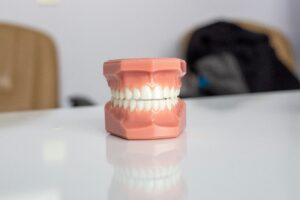This article was originally published on USsecondnews.com
Hair removal is a personal care routine that millions of people worldwide perform regularly. Whether for aesthetic reasons, cultural norms, or simply personal preference, removing unwanted hair can significantly impact one’s confidence and comfort. This comprehensive guide will explore the most popular and proven hair removal methods, detailing how they work, their benefits, risks, and tips to maximize results.
Why Consider Hair Removal?
Unwanted hair can affect how we feel about our bodies. Many people find smooth, hair-free skin more attractive and easier to maintain. Beyond aesthetics, hair removal can improve hygiene and reduce irritation caused by excessive hair in some cases. Choosing the right method depends on several factors such as hair type, skin sensitivity, budget, and desired duration of hairlessness.
1. Shaving: The Fast and Simple Solution
Shaving is probably the most familiar hair removal method worldwide. It involves cutting hair at the skin’s surface using a razor or electric shaver. Shaving is painless (unless you nick yourself) and can be done quickly at home.
How It Works:
A sharp blade slices off the hair just above the skin. This leaves the skin feeling smooth immediately after shaving.
Benefits:
- Very affordable; razors are inexpensive and widely available.
- Quick results — ideal if you need fast grooming.
- Painless if done carefully.
Considerations:
- Hair regrows quickly, usually within 1–3 days.
- Risk of cuts, razor burns, or ingrown hairs if not done properly.
- Requires frequent maintenance.
Pro Tips:
- Always use a clean, sharp razor.
- Apply shaving cream or gel to reduce friction.
- Shave in the direction of hair growth to minimize irritation.
2. Waxing: Smooth Skin for Weeks
Waxing is a popular method for those seeking longer-lasting hair removal. It involves applying warm or cold wax on the skin and quickly removing it, pulling hair from the root.
How It Works:
Wax adheres to the hair, and when pulled off, extracts the hair from its follicle.
Benefits:
- Results last 3 to 6 weeks since hair regrows from the root.
- Over time, hair tends to grow back finer and sparser.
- Can treat large areas like legs, arms, and back efficiently.
Considerations:
- Can be painful, especially for beginners or sensitive areas.
- Risk of redness, irritation, or ingrown hairs.
- Requires hair to be a certain length before waxing (about 1/4 inch).
Pro Tips:
- Exfoliate skin a day before waxing to reduce ingrown hairs.
- Avoid sun exposure before and after waxing.
- Use soothing lotions after waxing to calm the skin.
Learn more about waxing techniques at Healthline’s Waxing Guide.
3. Depilatory Creams: Chemical Hair Dissolution
Depilatory creams are chemical formulations that dissolve hair just below the skin’s surface. They offer a painless alternative to shaving or waxing.
How It Works:
Active chemicals break down keratin, the protein that makes up hair strands, allowing hair to be wiped away.
Benefits:
- Painless and easy to use at home.
- Works quickly, usually within 5–10 minutes.
- Can be used on legs, arms, underarms, and bikini areas.
Considerations:
- Some people may experience skin irritation or allergic reactions.
- The smell of these creams can be strong and unpleasant.
- Results last similar to shaving — a few days to a week.
Pro Tips:
- Always do a patch test 24 hours before full application.
- Follow instructions carefully to avoid skin burns.
- Moisturize skin after use to soothe irritation.
For safety information, visit Medical News Today on Depilatory Creams.
4. Laser Hair Removal: Long-Term Hair Reduction

Laser hair removal is a medical procedure that uses concentrated beams of light to damage hair follicles, inhibiting future growth.
How It Works:
The laser targets the pigment (melanin) in hair follicles, heating and damaging them to reduce hair growth.
Benefits:
- Significant reduction of hair after multiple sessions.
- Can lead to permanent hair removal in some cases.
- Precision treatment is suitable for the face, legs, arms, and bikini line.
Considerations:
- Requires multiple sessions (usually 6-8) spaced weeks apart.
- More effective on people with light skin and dark hair.
- Can be costly and should be performed by trained professionals.
- Some may experience temporary redness or swelling.
Pro Tips:
- Avoid sun exposure before and after treatment.
- Shave the area a day before the session (do not wax).
- Follow all aftercare instructions to avoid complications.
More on laser hair removal from Mayo Clinic.
5. Electrolysis: Permanent Hair Removal for All Hair Types
Electrolysis is the only FDA-approved method for permanent hair removal.
How It Works:
A fine needle delivers an electric current into each hair follicle, destroying its growth center.
Benefits:
- Permanent hair removal when treatments are complete.
- Works on all skin and hair types, including light or grey hair.
- Effective for small areas such as the face, eyebrows, and chin.
Considerations:
- Time-consuming since each follicle is treated individually.
- Can be uncomfortable; topical anesthesia may be used.
- Requires multiple sessions for best results.
Pro Tips:
- Choose a licensed, experienced electrologist.
- Keep the treated area clean and avoid sun exposure.
- Be patient; permanent results take time.
6. Sugaring: The Natural Alternative to Waxing

Sugaring is an ancient hair removal method that uses a paste made from natural ingredients like sugar, lemon juice, and water.
How It Works:
The sticky paste adheres to hair and removes it from the root, similar to waxing but gentler.
Benefits:
- Less painful than waxing for many people.
- Natural ingredients reduce the risk of allergic reactions.
- Easy cleanup with water — no sticky residue.
- Suitable for sensitive skin.
Considerations:
- Like waxing, hair must be a certain length.
- Can cause redness or irritation in sensitive areas.
Pro Tips:
- Exfoliate before sugaring for better results.
- Avoid sun exposure post-treatment.
- Moisturize regularly to keep skin smooth.
More about sugaring at Medical News Today Sugaring Guide.
How to Choose the Best Hair Removal Method for You

When selecting a hair removal method, consider:
- Skin Sensitivity: Sensitive skin may benefit from gentler methods like sugaring or depilatory creams.
- Pain Tolerance: If you prefer pain-free, shaving or creams are best. Waxing and laser involve some discomfort.
- Budget: Shaving and creams are the cheapest; laser and electrolysis are more expensive.
- Duration: For the short term, shaving is quick; for the long term, consider laser or electrolysis.
- Area of Treatment: Some methods suit large areas (waxing, shaving), while others are better for small, precise areas (electrolysis).
Consult a dermatologist if you have skin conditions, allergies, or medical concerns.
Tips for Better Results and Skin Care
- Always exfoliate before hair removal to prevent ingrown hairs.
- Moisturize after any treatment to soothe and hydrate skin.
- Avoid sun exposure after waxing, laser, or electrolysis to prevent irritation.
- Keep hair length appropriate for the method (e.g., 1/4 inch for waxing).
- Follow professional advice for medical procedures.
Conclusion: Feel Confident, Feel Beautiful
Choosing the right hair removal method can unlock a new level of confidence. Smooth, hair-free skin often boosts self-esteem and comfort in daily life. Whether you prefer a quick shave or a permanent laser solution, understanding the options allows you to make the best choice for your body and lifestyle.
Remember, hair removal is a personal journey. Experiment with different methods to find what suits you best and enjoy the confidence that comes with feeling your best every day.






